UNESCO World Heritage Sites in India

A nations cultural and natural heritage embodied in buildings, monuments and natural wonders is proof of a nation or civilisations history. Moreover, great buildings and monuments of ancient times trace the progress of humankind irrespective of where they are located. Therefore with jet travel having made the worlds greatest civilisational and natural wonders within reach of a progressively larger number of students, scholars and lay people around the world, theres growing awareness of the need to preserve and maintain heritage sites and monuments as evidence of the growth and development of humankind.
In 1965, the United States of America called for creation of a World Heritage Trust that would stimulate international cooperation to protect the worlds superb natural and scenic areas and historic sites for the present and the future of the entire world citizenry”. The idea was taken up by nature preservation organisations and in 1968, the International Union for Conservation of Nature (IUCN) developed similar proposals which were presented to the 1972 United Nations conference on Human Environment in Stockholm. The UN General Assembly referred the idea to the United Nations Educational, Scientific and Cultural Organization (UNESCO) and that very year, Unesco drafted an international treaty under the name and style of the Convention concerning the Protection of the World Cultural and Natural Heritage. The prime objective of the treaty was to encourage the identification, protection and preservation of cultural and natural heritage sites around the world believed to be of outstanding value to humanity.
Since then, UNESCO has been inspecting and identifying cultural and natural heritage sites worldwide and designating them Unesco World Heritage Sites (WHS). These heritage sites can be a forest, mountain, lake, desert, monument, building, complex or city. A list of such sites has been created and is updated and maintained by the international World Heritage Programme administered by the UNESCO World Heritage Committee comprising representatives of 21 member countries of the Unesco Convention. India was member of the Unesco World Heritage Committee from 2001-07. The committee is responsible for the implementation of the World Heritage Convention and allocation of grants from a World Heritage Fund for restoration, protection and preservation of world heritage sites. During its term in office, the committee makes final decisions on the inclusion or deletion of properties on the World Heritage List.
Currently, there are 1,073 sites (832 cultural, 206 natural, and 35 mixed properties) spread across 167 countries worldwide on the World Heritage list, with Italy leading with the largest number of world heritage sites (48).
One of the most important benefits of getting listed among world heritage sites is access to annual financial grants from the World Heritage Fund, which has a budget of $4 million (Rs.25 crore) per year for identification, preservation and promotion. Another intangible benefit of being inscribed on the world heritage list is the development of global awareness of the site and its outstanding values.
1. Ajanta Caves, Maharashtra

First in the country to be inscribed on the list of UNESCO World Heritage sites in 1983, the Ajanta caves date back to the 2nd century BCE to 650 CE and feature the finest masterpieces of 31 rock-cut Buddhist cave monuments, paintings and sculptures. The caves were built in two different phases. The first was built in (230BCE-220CE) of the Satavahana Period under the patronage of the Satvahana Dynasty and second, the caves of the Vakataka Period were built during the reign of the Emperor Harishena of the Vakataka Dynasty.
2. Ellora Caves, Maharashtra

Also added in 1983 to the UN world heritage sites list, the Ellora Caves are well known for their Indian-rock cut architecture with 34 rock-cut temples and caves dating back to about 600 to 1000 CE. The excavated site includes Charanandri Hills, Buddhist Hindu and Jain rock-cut temples, Viharas and Maths of the 5th and 10th century.
3. Agra Fort, Uttar Pradesh
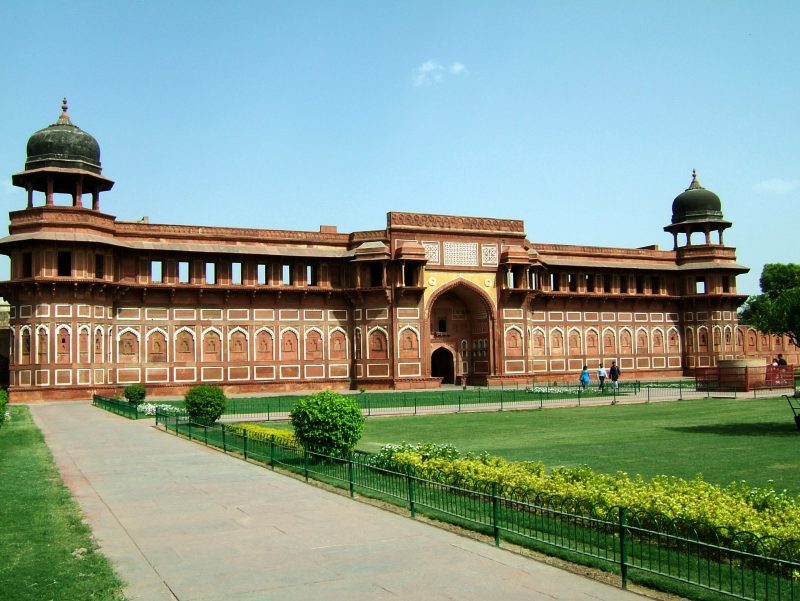
Added along with the Ajanta Caves on the list of UNESCO World Heritage sites in 1983 was the Agra Fort situated quite close to the Taj Mahal. Built during the reign of Emperor Akbar, the Agra Fort includes a number of notable monuments like the Khas Mahal, Sheesh Mahal, Muhamman Burie(an octagonal Tower), Diwan-e-Khas, Diwan-e-Am, Moti Masjid and the Nagina Masjid.
4. Taj Mahal, Agra

Listed in 1983 as a UN heritage site, the Taj Mahal is famously called the “Jewel of Muslim Art in India”. Built by emperor Shah Jahan in the memory of his favourite wife Mumtaz Mahal, the architectural wonder is hailed as the symbol of love. Completed in 1653, this white Marble Mughal Architecture is also one of the Seven Wonders of the World.
5. Sun Temple, Konark, Odisha
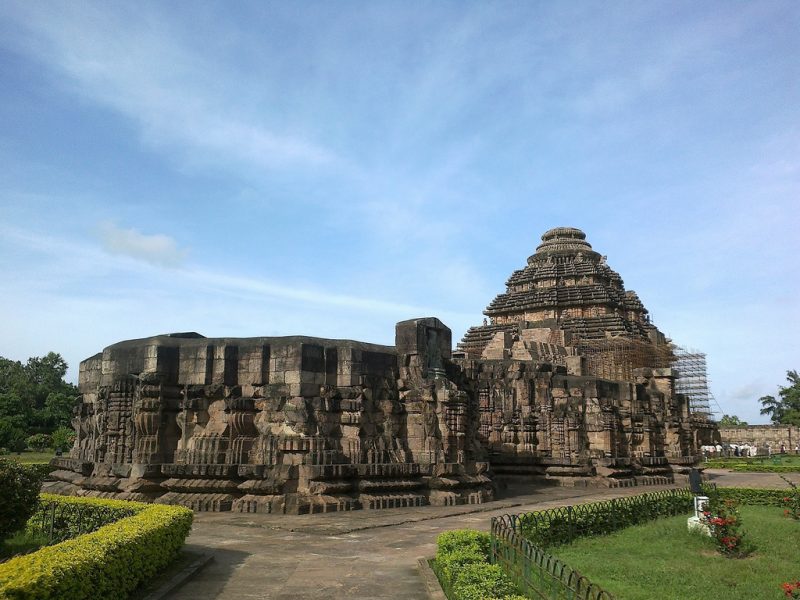
Built by King Narasimhadeva I of the Eastern Ganga Dynasty in 1250, the Sun Temple at Konark is constructed in the shape of a gigantic chariot with carved stone wheels led by six enormously carved horses. Added to the heritage list in 1984, Sun Temple reflects Kalinga style architecture and is considered to be one of the largest Brahmin sanctuaries in India.
6. Manas Wild Life Sanctuary, Assam
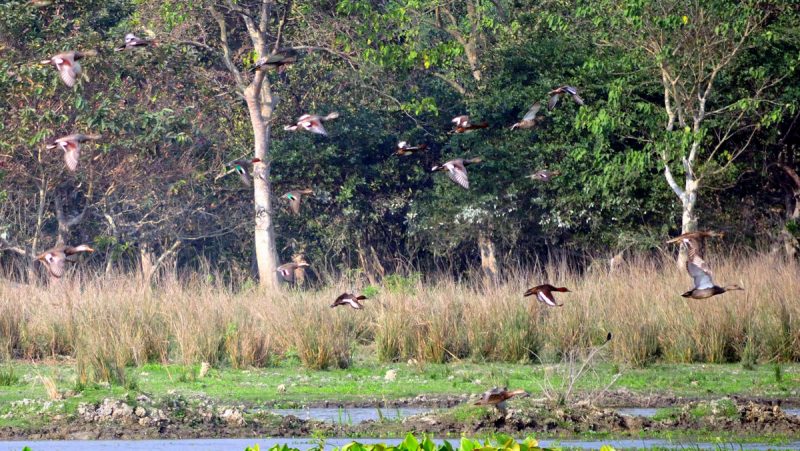
Identified in 1986 among the heritage sites, Manas Wild Life sanctuary is a Project Tiger Reserve, Elephant Reserve, Biosphere Reserve and a home for a number of endangered species like Assam Roofed Turtle, Hispid Hare, Golden Langur and Pygmy Hog. In fact, this park houses most endangered species than any other in India.
7. Monuments of Khajuraho, Madhya Pradesh

Built between 950 to 1050 CE during the reign of the Chandella dynasty, Khajuraho monuments are a group of 85 Hindu and Jain Temples spread across an area of 20 square kilometres. Well known for their Nagara style of art with erotic figures and sculptures of men and women, the Khajuraho monuments were added to the UN heritage site in 1986.
8. Monuments of Hampi, Karnataka

Capital of the ancient, prosperous kingdom of Vijayanagar, Hampi was the world’s second-largest city attracting traders from all around the world in the 14 century CE. Added in 1986 to the UN heritage sites list, the ruins of Hampi depict the Dravidian style of art and architecture.
9. Chola Temples, Tamil Nadu
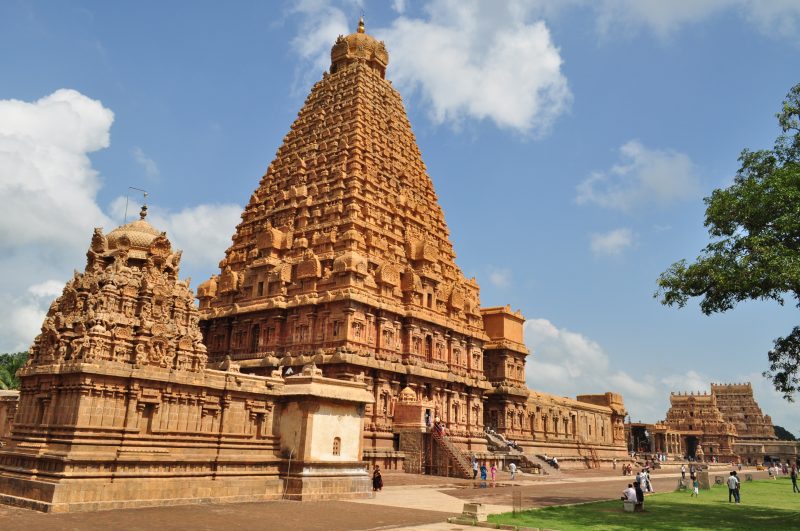
Added in 1987, the Chola temples were built in the southern part of India during the rule of the Chola dynasty between the early 11th and 12th century CE. The Brihadisvara Temple, the Temple at Gangaikonda Cholapuram and the Airavatesvara Temple are the most important of all of these temples. The Brihadisvara temple was built under the reign of Rajaraja 1, and Gangaikondacholapuram was patronised by Rajendera, the Airavatesvara temple was built the reign of Rajaraja II.
10. Kaziranga Wild Life Sanctuary, Assam

Kaziranga Wildlife Sanctuary was incepted by Lord Curzon when his wife failed to see a single Rhinoceros in the region. So she requested her husband to take measures for the protection of these endangered species. Set up in 1908, the sanctuary houses about 15 endangered species, of which the Rhino is the most endangered. Other species are capped langur, hoolock gibbon, tiger, leopard, sloth bear, Ganges dolphin, otter, wild boar, water buffalo, gaur, sambar, swamp deer, hog deer and Indian muntjac. The sanctuary was added to UNESCO’s list in 1985.
11. Keoladeo National Park, Bharatpur, Rajasthan

Also known as Bharatpur Bird Sanctuary, Keladeo National Park is a home to about 366 different species of birds. Identified in 1986 as a UN heritage site the national park is spread over 29 square kilometres and hunting is now banned in this area and is a punishable offence. Besides birds, there are 379 floral species, 50 species of fish, 13 species of snake, 7 species of lizard, 7 species of amphibians, 7 turtle species and variety of other invertebrates.
13. Group of Monuments at Mahabalipuram, Tamil Nadu

The temples were built during the reign of the Pallava rulers and the specialty of these temples is that they are all carved out of rocks and are unique for their ratha style of architecture. UNESCO inscribed these monuments to its list in 1984. The Mahabalipuram group of monuments include 40 sanctuaries including largest open-air-bas-relief, eg, Ganga’s Descent.
14. Sundarbans National Park, West Bengal

Famous for the Royal Bengal Tigers, the Sunderbans National Park was recognised as a UN heritage site in the year 1985. Sited on the Sunderban Deltas formed by the river Ganges in the Bay of Bengal, the national park is home to the critically endangered Royal Bengal Tiger. The other species found here are gangetic dolphin, spotted dear and wild boar.
15. Churches and Convents of Goa

The 15th and 16th centuries marked the coming of the Portuguese to India, along the Konkan coast. Several churches and convents were built in Goa. Churches and Convents of Goa includes Saint Catherine’s Chapel, Church and Convent of Saint Francis of Assisi, Basílica do Bom Jesus, Igreja de São Francisco de Assis, Church of Saint Cajetan and its seminary, Church of Our Lady of the Rosary and Church of Saint Augustine. Due to their different, yet beautiful architectural forms, churches have been included in the list of UNESCO World Heritage Sites in 1986.
16. Fatehpur Sikri, Uttar Pradesh

Built during emperor Akbar’s rule to commemorate his victory, Fatehpur Sikri constitutes of four main monuments, The Jama Masjid, The Buland Darwaza, Panch Mahal or Jada Baai ka Mahal, Diwan-e-khas and Diwan-e-aam. Interior to the Buland Darwaza lies the Tomb of Salim Chishti. Fatehpur Sikri was accredited as a UN heritage site in 1986.
17. Group of Monuments at Pattadakal, Karnataka
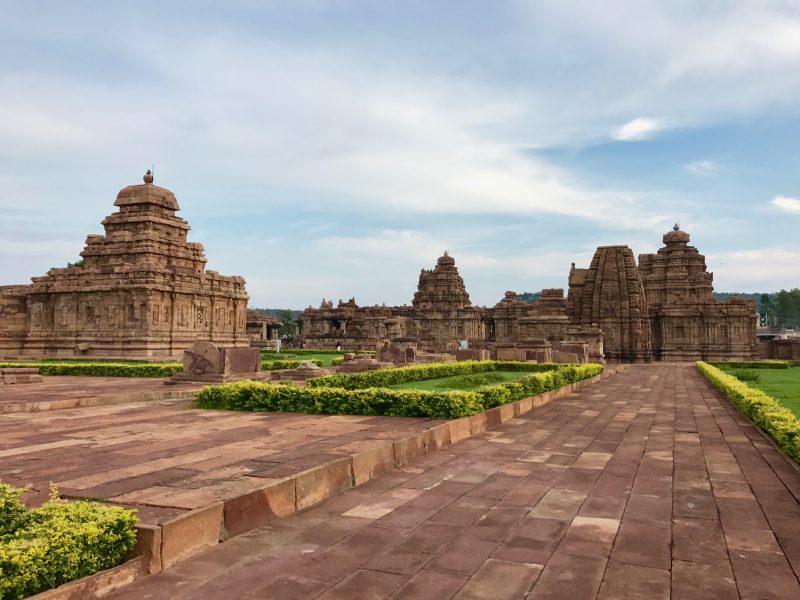
Constructed by the Chalukya rulers, it includes 8 temples dedicated to Lord Shiva and Jain and Shaivite sanctuaries. The important monuments are Virupaksha Temple, Sangameshwara Temple, Chandrashekhara Temple, Mallikarju Temple, Kashivishwanaath Temple, Galganath Temple, Jain Temple among others. The Pattadakal monuments were acknowledged by UNESCO in 1987.
17. Elephanta Caves, Maharashtra

Also known as Gharapuri, these caves are famous for their rock-cut sculptures and carvings depicting Lord Shiva. The caves are carved in solid basalt rock and most historians believe it to have been completed by about 550 CE. The caves were recognised as a UN heritage site in 1987.
18. Nanda Devi and Valley of Flowers National Parks, Uttarakhand

The Nanda Devi is the highest mountain peak of India. The Valley of Flowers is a National Park which stretches up to 8 kilometers in length and 2 kilometers in width. It is famous for the astonishing variety of flowers. Acknowledged in 1988, this World Heritage Sites in India is home to more than 600 species of Flora and over 520 species of fauna.
19. Sanchi Stupa, Madhya Pradesh

The Sanchi Stupa is the oldest stone structures in India and were commissioned by emperor Ashoka in the 3rd century BCE. Its core was a hemispherical brick structure built over the relics of Buddha and was crowned by the Chatra which symbolises rank. The monument was added to the heritage list in 1989.
20. Humayun’s Tomb, New Delhi

Included in 1993 to the list, this heritage site was built by Begum Bega, the first wife of Humayun between 1565-1572. It’s a tomb complex consisting of several smaller monuments including the tombs of Isa Khan Niyazi, an Afghan noble in Sher Shah Suri’s court of the Suri dynasty.
21. Qutub Minar and its Monuments, New Delhi

The Qutub Minar was built in 1193 by the first Muslim ruler of Delhi, Qutub-ud-din Aibak of the Mamluk Dynasty, after defeat of Delhi’s last Hindu Kingdom. It occupies the centre stage in the complex mainly due to its height. The Qutub Minar Complex comprising of Qutb Minar, Alai Darwaza, Alai Minar, Qubbat-ul-Islam Mosque, Tomb of Iltumish, and Iron Pillar was accredited among the UN heritage sites in 1993.
22. Mountain Railways of Darjeeling, Kalka, Shimla & Nilgiri
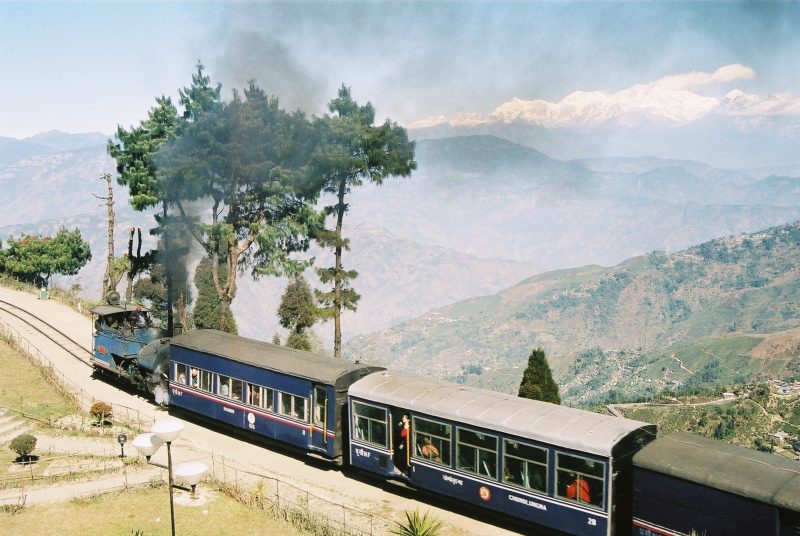
Recognised in 1999, the Darjeeling Himalayan Railway, the Nilgiri Mountain Railway and the Kalka-Shimla Railway are part of the esteemed UN heritage sites. Built during the 19th and early 20th century, these engineering miracles brought an end to connectivity problems in the rugged mountains. Pass through the beautiful terrain, they serve as a joy ride for tourists.
23. Mahabodhi Temple Complex, Bihar
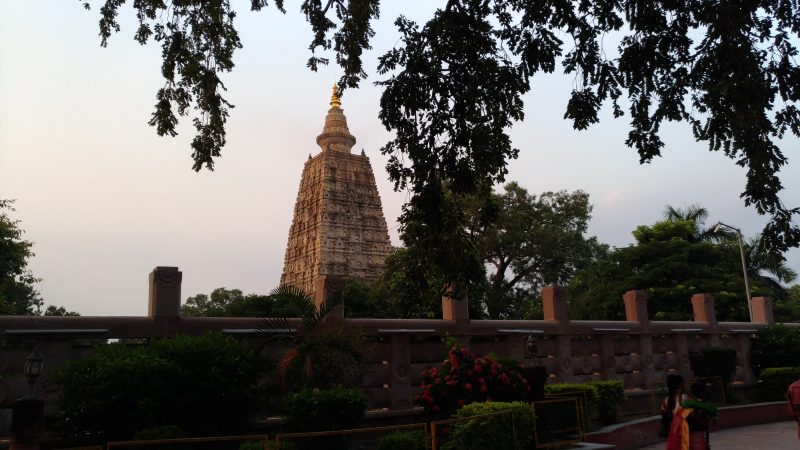
A religious centre for the Buddhists, the famous Mahabodhi Temple was built during the reign of Emperor Ashoka in about approximately 250 BCE. The Mahabodhi Temple complex at Bodh Gaya comprises the 50 metre tall Mahabodhi Temple, the Vajrasana, sacred Bodhi Tree and other six sacred sites of Gautam Buddha’s enlightenment, surrounded by numerous ancient Votive stupas. Mahabodhi Temple was added in 2002.
24. Rock Shelters of Bhimbetka, Madhya Pradesh

Rock Shelters of Bhimbetka were declared a Unesco World Heritage Site in 2003, and is the place where the earliest traces of human life on Indian subcontinent were discovered. Located at the foothills of the Vindhaya Mountains are archaeological sites and indicate the beginning of the South Asian Stone Age. The rock shelters comprise a group of five rocks which were discovered in 1957, and are renowned for the Mesolithic era carvings and paintings.
25. Chhatrapati Shivaji Terminus (formerly Victoria Terminus), Maharashtra
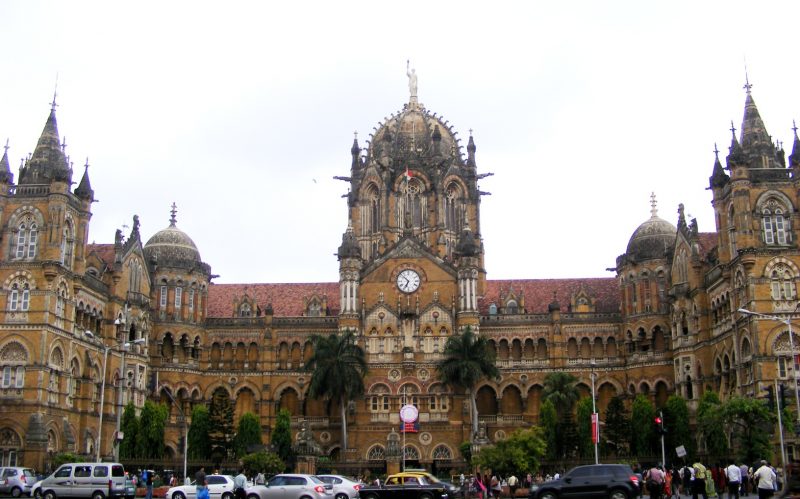
Acknowledged as a heritage site in 2004, the Chattrapati Shivaji Terminus, formerly known as the Victoria Terminus is the headquarters of Central Railway in Mumbai. It was built by Frederick William Stevens with the inspiration from Victorian Italianate Gothic Revival architecture and traditional Mughal buildings between the years 1878-1888, and gave Mumbai the face of being the International Mercantile Port of India.
26. Champaner-Pavagadh Archaeological Park, Gujarat

Listed among the UNESCO heritage sites in 2004, Champaner-Pavagadh Archaeological Park includes 11 different types of heritage monuments that are- Mosques, Temples, Tombs, Gateways, Fortresses and walls, Palaces and Pavilion, Helical Wells, Custom house and Greeneries all belonging to 16th century. The park also houses some of the ancient Chalcolithic Indian Sites, from the Stone Age era.
27. Red Fort Complex, Delhi

Built by Emperor Shah Jahan when he shifted his capital from Agra to Delhi, or what was known as Shahjahanabad at that time, the Red Fort is made up of red sandstone and houses several other smaller buildings such as the private pavilions, the Diwan-i-aam, the Diwan-i-khas. The Red Fort is managed directly by the Archaeological Survey of India.
28. Jantar Mantar, Jaipur, Rajasthan

Acknowledged in 2010 by UNESCO, the astronomical observatory built by the Rajput King Sawai Jai Singh of Rajasthan in 1738 CE is a collection of 19 man-made astronomical instruments including the world’s largest stone Sundial. The observatory houses instruments which were used to calculate celestial coordinate systems, such as the horizon-zenith local system, the equatorial system and the ecliptic system.
29. Western Ghats

The Western Ghats or the Sahyadri mountain ranges runs along the western edge of Deccan Plateau with several national parks, reserve forests and wildlife sanctuaries in Kerala, Karnataka, Tamil Nadu and Maharashtra. Added to the heritage site list in 2012, Western Ghats ranks among the top 8 in World’s Biological Hot Spot Locations. The forests along the Western Ghats are home to about 325 species of flora and fauna, which included endangered, rare and critically endangered species of plants and animals.
30. Hill Forts of Rajasthan

Among the recent additions to the list of World Heritage Sites in India in 2013, Hill Forts of Rajasthan is famous for its unique Rajput military defense architecture. It includes six majestic forts in Chittorgarh, Kumbhalgarh, Ramthambore fort, Gagron Fort, Amber Fort and Jaisalmer Fort revealing the testimony of the power of the Rajput princely states that flourished from the 8th to the 18th centuries.. They’re located on the rocky Aravalli Mountain Range in Rajasthan.
31. Rani Ki Vav, Patan, Gujarat

Declared as a UNESCO World Heritage site in 2014, Rani-ki-vav is well known for its stepped corridors, sculptures and stone sarvings in the well. Built during the reign of the Solanki dynasty in the 3rd millennium BC, as per historians it was constructed in the honour and memory of Bhimdev 1, the son of the founder of the dynasty, by his widowed queen Udayamati. This heritage site is dedicated to Lord Vishnu, and is designed as an inverted temple divided into seven levels of wells each having its own importance.
32. Great Himalayan National Park, Himachal Pradesh
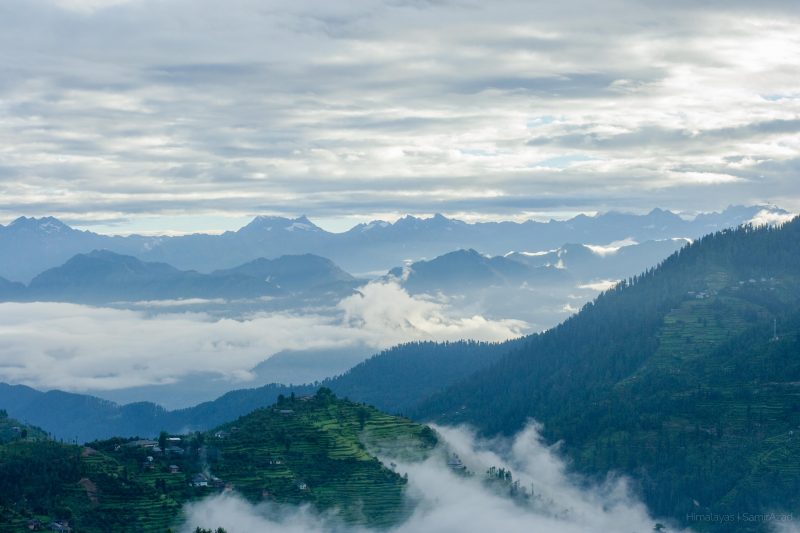
One of the newer additions to the list of World Heritage Sites in India added in the year 2014 is the Great Himalayan National Park spread over 754.4 square kilometers and home to about 375 fauna species and several floral species, including some very rare species of plants and animals such as blue sheep, snow leopard, Himalayan brown bear, Himalayan Tahr, musk deer spruces, horse chestnuts and huge alpine meadows.
33. Nalanda Mahavihara (Nalanda University), Bihar

A centre of learning and a Buddhist monastery from 3rd century BCE to the 13th century CE, one can see the remains of stupas, shrines, and viharas. Having served as an abode of knowledge for 800 years, this university was known for its formalised Vedic learning and scholars from as far as Tibet, China, Korea, and Central Asia once attended this first residential university of the world.
34. Khangchendzonga National Park, Sikkim
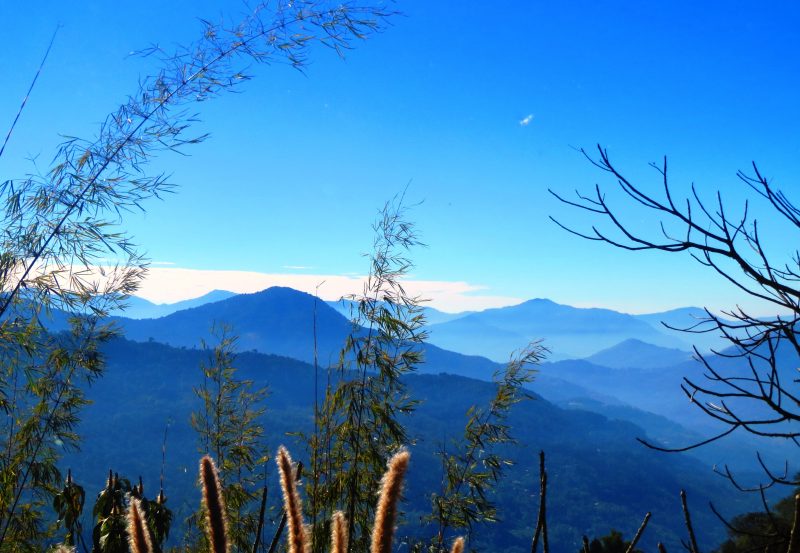
Khangchendzonga National Park was declared as a world heritage site in 2016. Also known as Kanchenjunga national park and Kanchenjunga Biosphere Reserve it is a huge area spreading over 850 sq. km and includes the Kanchenjunga Peak, which is the 3rd highest peak in the world. The park contains many species including musk deer, snow leopard, Himalayan tahr, wild dog, sloth bear, civet, Himalayan black bear and many others.
35. Capitol Complex, Chandigarh
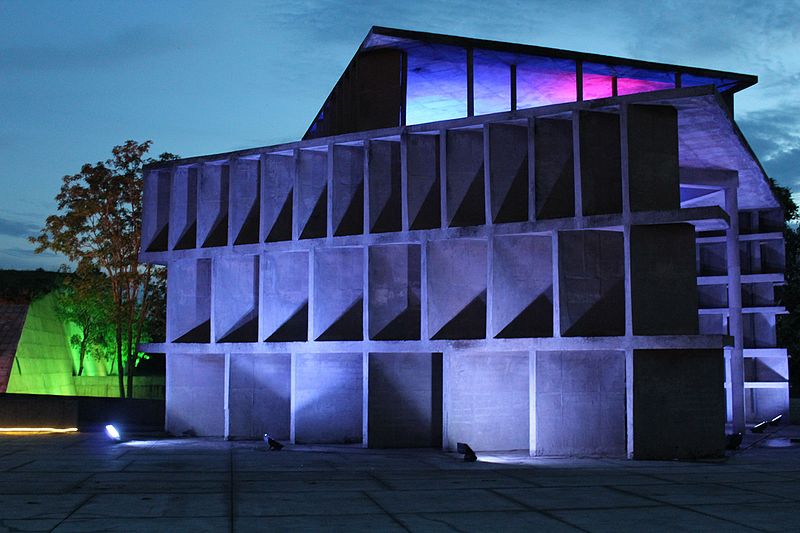
The architectural work of Le Corbusier a Swiss-French architect, designer, painter, urban planner, across 17 countries in the first half of 20th century including the Capitol Complex of Chandigarh, was recognized as a World Heritage Site as part of an outstanding contribution to Modern Movement. Adjudged as a UN heritage site in 2016, the Capitol Complex in Chandigarh also hosts the legislative assembly for both the states of Haryana and Punjab, High Court and the Secretariat.
36. The Historic City of Ahmedabad

The first city of India to enter the list, Ahmedabad was declared as the World Heritage City on July 8, 2017. Ahmedabad has close to 25 Archaeological Survey of India protected structures. According to a statement from UNESCO “The urban fabric is made up of densely-packed traditional houses (pols) in gated traditional streets (puras) with characteristic features such as bird feeders, public wells and religious institutions. The city continued to flourish as the capital of the State of Gujarat for six centuries, up to the present”.
37. The Victorian and Art Deco Ensembles of Mumbai
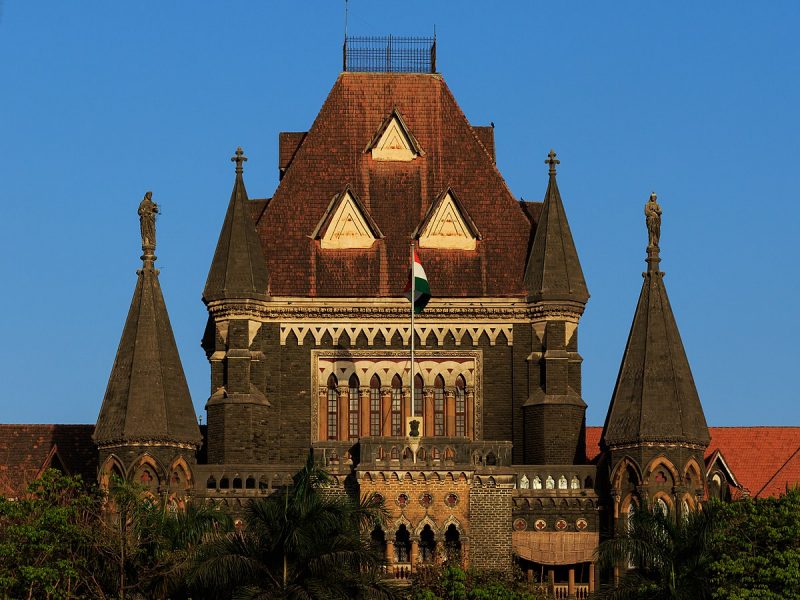
The Victorian and Art Deco Ensembles of Mumbai was inscribed in 2018 as the world heritage site. They are a collection of the 19th century Victorian Neo-Gothic public buildings and 20th century Art Deco buildings in the Fort area of Mumbai. They include Bombay High Court, Rajabai Clock Tower, Eros Cinema and the University of Mumbai. With this Mumbai becomes the second city after Ahmedabad to be inscribed on the world heritage list.
Also read: Most visited pilgrims sites in the world
















Add comment